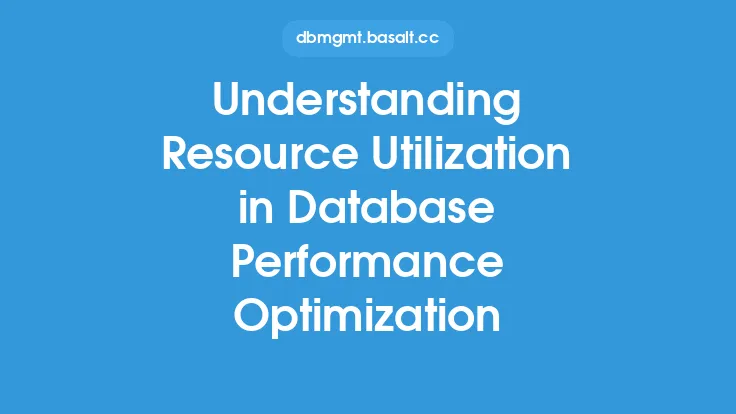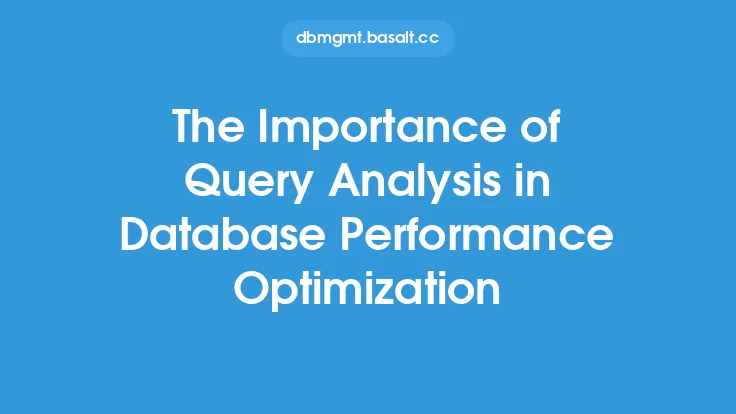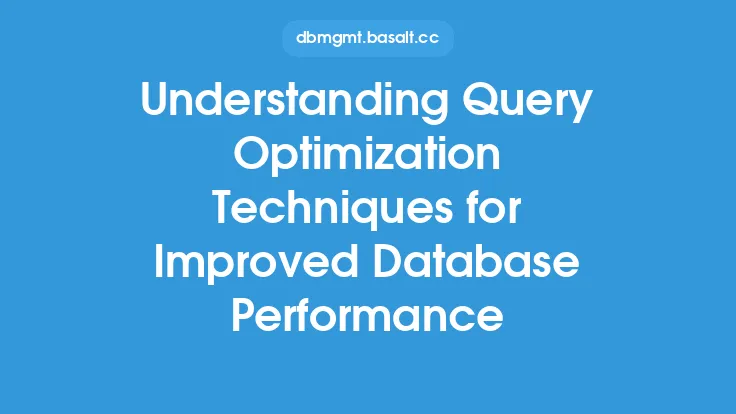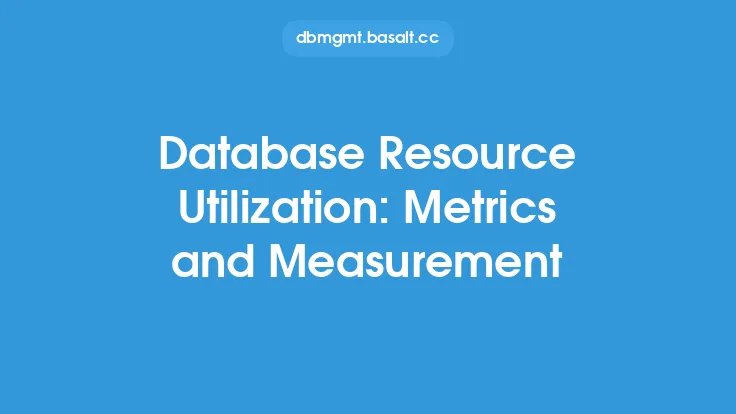Database performance optimization is a critical aspect of ensuring the overall efficiency and reliability of database systems. One key factor that significantly influences database performance is resource utilization. Analyzing and optimizing resource utilization can help database administrators identify bottlenecks, reduce waste, and improve the overall performance of their database systems. In this article, we will delve into the concept of database performance optimization through resource utilization analysis, exploring the various aspects of resource utilization, its impact on database performance, and strategies for optimization.
Introduction to Resource Utilization Analysis
Resource utilization analysis is the process of monitoring and analyzing the usage of system resources such as CPU, memory, disk space, and network bandwidth by a database system. This analysis helps database administrators understand how resources are being utilized, identify areas of inefficiency, and optimize resource allocation to improve database performance. Resource utilization analysis involves collecting data on resource usage, analyzing the data to identify trends and patterns, and using this information to make informed decisions about resource allocation and optimization.
Types of Resources in Database Systems
Database systems utilize various types of resources, including hardware resources such as CPU, memory, and disk space, as well as software resources such as database connections and locks. Understanding the different types of resources and how they are utilized is essential for effective resource utilization analysis. CPU resources are used for executing database queries and performing other database operations. Memory resources are used for storing database data and indexes, as well as for caching frequently accessed data. Disk space resources are used for storing database files and logs, while network bandwidth resources are used for communicating with clients and other database systems.
Resource Utilization Metrics
To analyze resource utilization, database administrators use various metrics such as CPU utilization, memory utilization, disk utilization, and network utilization. These metrics provide insights into how resources are being utilized and help identify areas of inefficiency. CPU utilization metrics, for example, can help identify CPU-intensive queries and processes that may be impacting database performance. Memory utilization metrics can help identify memory leaks and other issues that may be causing memory shortages. Disk utilization metrics can help identify disk bottlenecks and optimize disk storage, while network utilization metrics can help identify network bottlenecks and optimize network communication.
Analyzing Resource Utilization Patterns
Analyzing resource utilization patterns is essential for understanding how resources are being utilized and identifying areas for optimization. Resource utilization patterns can be analyzed using various tools and techniques, including graphing and charting, statistical analysis, and machine learning algorithms. Graphing and charting can help visualize resource utilization patterns and identify trends and anomalies. Statistical analysis can help identify correlations and relationships between different resource utilization metrics, while machine learning algorithms can help predict future resource utilization patterns and identify areas for optimization.
Strategies for Optimizing Resource Utilization
Optimizing resource utilization involves identifying areas of inefficiency and implementing strategies to improve resource allocation and utilization. Various strategies can be used to optimize resource utilization, including query optimization, indexing, caching, and resource allocation. Query optimization involves optimizing database queries to reduce CPU and memory utilization, while indexing involves creating indexes to improve query performance and reduce disk utilization. Caching involves storing frequently accessed data in memory to reduce disk utilization, while resource allocation involves allocating resources such as CPU and memory to different database processes and queries.
Tools and Techniques for Resource Utilization Analysis
Various tools and techniques are available for resource utilization analysis, including database management system (DBMS) built-in tools, third-party monitoring tools, and scripting languages. DBMS built-in tools such as SQL Server Management Studio and Oracle Enterprise Manager provide features for monitoring and analyzing resource utilization. Third-party monitoring tools such as Nagios and SolarWinds provide features for monitoring and analyzing resource utilization, as well as alerting and reporting. Scripting languages such as Python and Perl can be used to automate resource utilization analysis and optimization tasks.
Best Practices for Resource Utilization Analysis
To get the most out of resource utilization analysis, database administrators should follow best practices such as monitoring resource utilization regularly, analyzing resource utilization patterns, and optimizing resource allocation. Monitoring resource utilization regularly helps identify areas of inefficiency and optimize resource allocation. Analyzing resource utilization patterns helps identify trends and anomalies, while optimizing resource allocation helps improve database performance and reduce waste. Additionally, database administrators should stay up-to-date with the latest tools and techniques for resource utilization analysis and optimization.
Conclusion
Database performance optimization through resource utilization analysis is a critical aspect of ensuring the overall efficiency and reliability of database systems. By analyzing and optimizing resource utilization, database administrators can identify bottlenecks, reduce waste, and improve database performance. Understanding the different types of resources, resource utilization metrics, and strategies for optimization is essential for effective resource utilization analysis. By following best practices and using the right tools and techniques, database administrators can optimize resource utilization and improve database performance.





